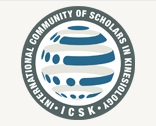The Optimal Time Window for Complex Training to Increase Repeated Sprint Ability in Ice Hockey
Presentation Type
Keynote Speaker
Abstract
The goal of this study was to investigate the post-activation performance enhancement (PAPE) and optimal time window following complex training (CT) to increase ice-hockey player skating speed and endurance. Ten professional ice-hockey players (age= 19.8±1.23 years, height= 1.8± 0.06 m, weight= 83.37±4.79 Kg,) from the American Hockey League (AHL, n=7) and the National Hockey League (NHL, n=3) were assigned randomly into two groups. Both groups completed the same CT training protocol, designed to induce post-activation potentiation (PAP). One group completed the training 8 hours prior to testing (8HPT), and the other 4 hours (4HPT) before testing. The CT PAP training protocol consisted of 3 sets of 5 repetitions of trap high bar deadlifts superset with 6 box jumps on a 20-inch plyometric box. The effect of CT PAP training on performance was assessed using the following testing: the countermovement jump (CMJ), the static squat jump (SSJ), the stationary broad jump (BJ), reactive strength index (RSI), eccentric utilization ratio (EUR), the double leg incremental drop jump tests (DJ), and on ice 40 meter sprint time during the Peterson On-Ice repeated shift Test (POIT). Results showed significant improvements for both groups for the after CT PAP training for the SJ (4HPT: p= 0.04), BJ (8HPT: p= 0.02; 4HPT: p=0.03), POIT (8HPT: Sprint 4, 5, 6, 8: p
Keywords: Contrast Training; Pre-Game Training; Resistance Training; Skating Speed; Rate of Force Development (RFD), On-Ice Sprint, Acceleration, Repeated Sprint
The Optimal Time Window for Complex Training to Increase Repeated Sprint Ability in Ice Hockey
The goal of this study was to investigate the post-activation performance enhancement (PAPE) and optimal time window following complex training (CT) to increase ice-hockey player skating speed and endurance. Ten professional ice-hockey players (age= 19.8±1.23 years, height= 1.8± 0.06 m, weight= 83.37±4.79 Kg,) from the American Hockey League (AHL, n=7) and the National Hockey League (NHL, n=3) were assigned randomly into two groups. Both groups completed the same CT training protocol, designed to induce post-activation potentiation (PAP). One group completed the training 8 hours prior to testing (8HPT), and the other 4 hours (4HPT) before testing. The CT PAP training protocol consisted of 3 sets of 5 repetitions of trap high bar deadlifts superset with 6 box jumps on a 20-inch plyometric box. The effect of CT PAP training on performance was assessed using the following testing: the countermovement jump (CMJ), the static squat jump (SSJ), the stationary broad jump (BJ), reactive strength index (RSI), eccentric utilization ratio (EUR), the double leg incremental drop jump tests (DJ), and on ice 40 meter sprint time during the Peterson On-Ice repeated shift Test (POIT). Results showed significant improvements for both groups for the after CT PAP training for the SJ (4HPT: p= 0.04), BJ (8HPT: p= 0.02; 4HPT: p=0.03), POIT (8HPT: Sprint 4, 5, 6, 8: p
Keywords: Contrast Training; Pre-Game Training; Resistance Training; Skating Speed; Rate of Force Development (RFD), On-Ice Sprint, Acceleration, Repeated Sprint


